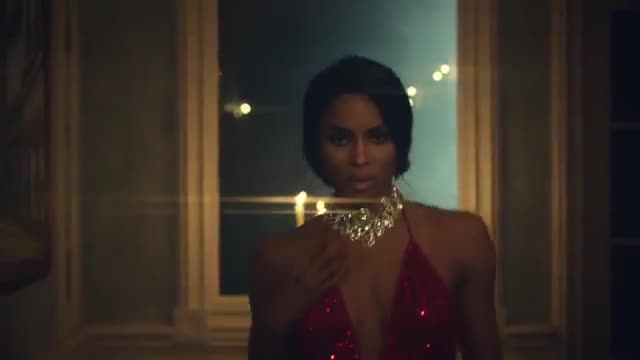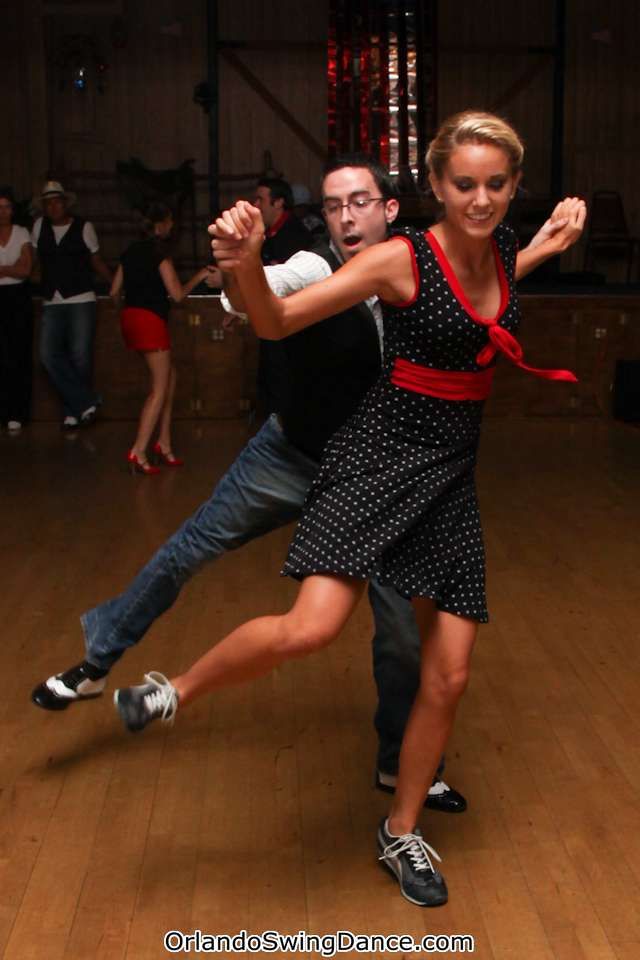How to memorize dance choreography faster
5 Tips to Help You Remember Choreography
Have you been struggling to remember the moves in dance class? Are your auditions coming up?
Here are some tips to help you memorize choreography like a pro. No more freezing or falling behind!
5 Tips to Memorize Choreography
1. Chunking
Chunking is a memorization technique where you learn something in separate sections, then group the sections together at the end.
We use chunking to remember things like phone numbers, addresses, and even song lyrics.
For example, 678-999-8212 is much easier to memorize than 6789998212.
In your dance class or audition, the teacher will probably teach the routine sections already.
But you can chunk the moves into lengths that work for you, whether this means going 1 8-count combo at a time, or separating the piece into 2 halves.
Chunking is a great tool to help you memorize choreography, but sometimes, you can get stuck between those chunks.
It doesn't matter how well you know each chunk – you have to make sure you're connecting them together seamlessly.
2. Connect the chunks
There's a trick to connect those chunks that we talked about in this video:
Basically, always practice a few moves / counts before a chunk, and even after the chunk.
Although dance choreography is usually taught to 8-counts, the dance is performed to the sounds in music – which don't go by cleanly cut counts.
So don't start and stop your movements according to their chunks.
Blend by transitioning the moves in between them. Because the whole thing is really 1 dance! *cue Drake*
3. Use contexts in the song
As we mentioned in Tip #2, you dance to music.
The choreographer made the routine to music.
MUSIC.So, a good way to learn and memorize choreography is to follow... the music!
For example:
Let's say a song / piece goes through the flow of.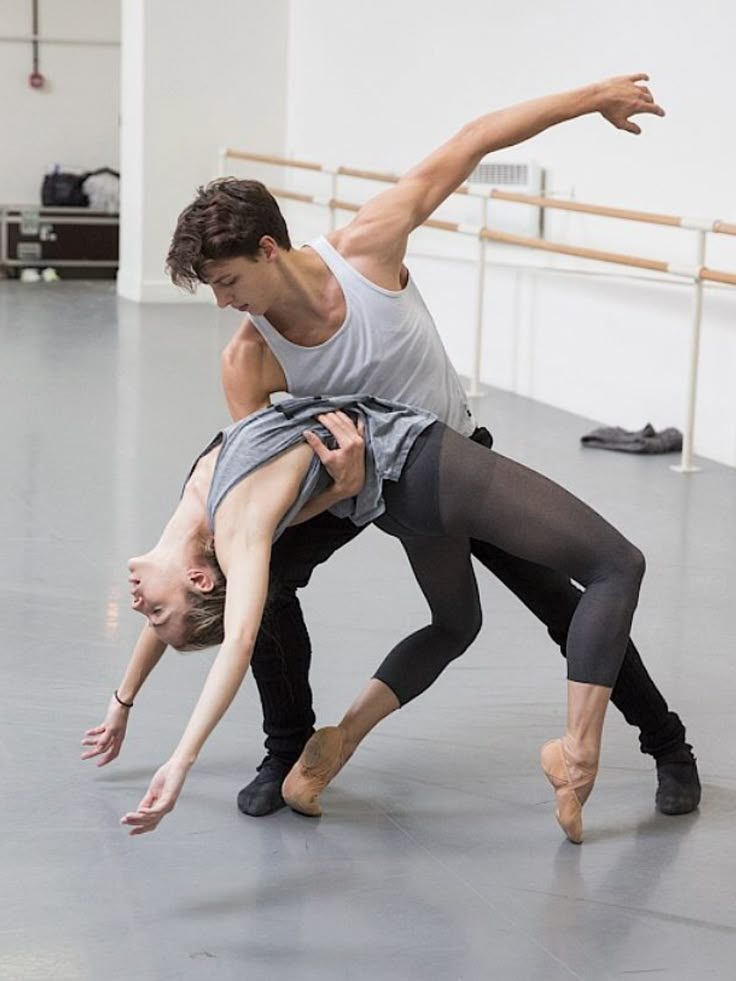 ..slow, melodic intro → UPBEAT, POWERFUL CHORUS → iNtRiCaTe beat kill-off to end
..slow, melodic intro → UPBEAT, POWERFUL CHORUS → iNtRiCaTe beat kill-off to end
You probably won't start finger-tutting in the first section or forget that you're supposed to do heavier movements in the middle.
We always tell you to listen to the music to catch musicality nuances, so you know what textures you should use.
But you should also listen to simply understand the arc of the song, and how that dictates the routine.
4. Make up your own "personal cues"
In our "What is an 8-count” video, we talked about how dancers use counts to map out their choreography.
Counts are a good skeleton to base your memorization off of, but the numbers don't actually provide a ton of information.
They keep track of the rhythm and quantitatively measure where you are in the piece, but they don't tell you how to dance.
So let's get more descriptive than the counts.
Use sounds or actions that you come up with yourself that will actually help you memorize the moves and how you should be executing them.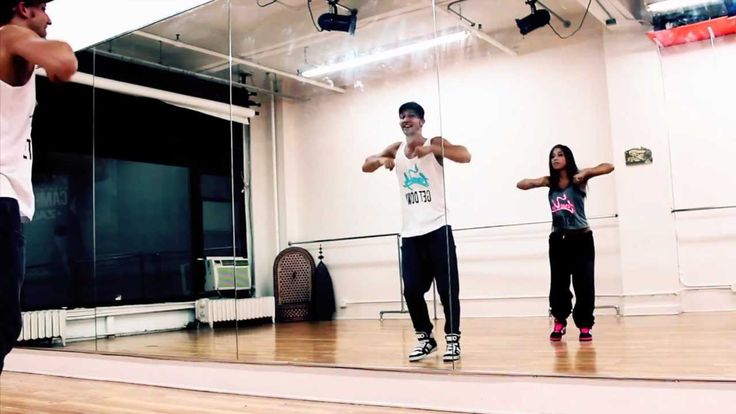
Here are 4 examples of personal cues that you can use:
1. Naming the moves
Count this out loud:
"1 and 2 and a 3 and 4"
Now, say this out loud:
"Right left push, turn around, look dip."
The latter gives you the same information as the first 8-count (tempo, when the movements take place) and it ALSO hints at the moves themselves!
I personally find this trick most helpful for footwork.
As I'm learning, I'll memorize choreography as:
"Kick ball change, and left and right. Right left right left right, out, together."
2. Snapping
Unlike naming the moves, snapping is more for your body to remember the moves.
I've seen people (Dezi Del Rosario does this a lot) use snaps to mark the points in the moves.
This really forces your body to get to that point while dancing, because you've conditioned it to snap in a certain position.
3. Breathing
Breathing is similar to snapping in that it'll train your body to memorize choreography – use it to remember to slow down or dial back the energy.
You know those pieces where there's a crazy fast combo, then you go into a chill groove???
That sudden drop in energy would look clumsy and out of place, if you didn't breathe through it.
Choreographers might even count that part of the choreography using breaths.
Use cues in your own breathing to memorize choreography parts that are more relaxed.
4. Using obscure sound effects
David Lee loves using whatever sound to mark his movements.
No matter how silly they sound 😂
When you use these personal cues, whether it's naming the moves, snapping, breathing, or making up sounds...
You’re building your own version of the piece that makes sense to you.
When you do this, the dance routine feels more natural and easy to remember.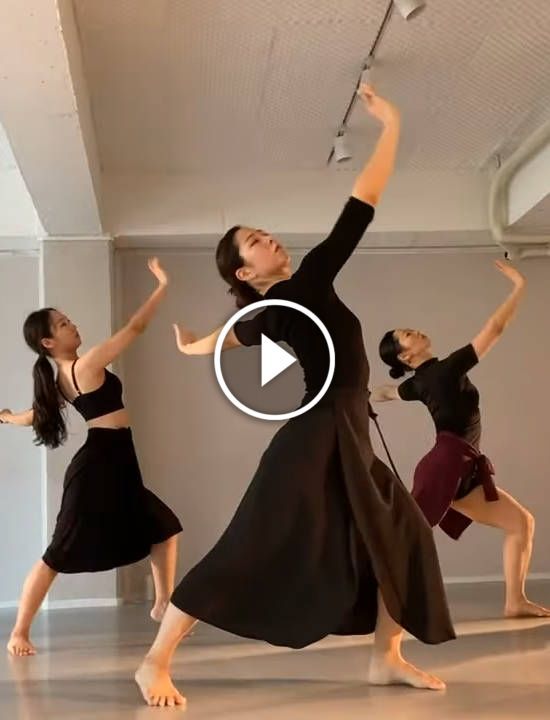
5. Drill the moves into your muscle memory
This is a simple tip, but so important that I MUST mention it!!!!
Repetition.
If you do something over and over again, then your body will start to do it on autopilot.
So drill a section of choreography 50 times if you need to. Heck, do it 100 times!
This way, even when you have a brain fart, your body can simply take over.
...
And into your visual memoryYes, doing the dance over and over will help your body memorize it.
But it can also be just as effective to watch it over and over, too.
Take a recording of the choreographer or teacher, or of yourself doing the piece, and let your eyes and mind absorb it.
Use all the tips we talked about in this article as you're watching the piece (not just while learning it).
For example, observe how the movements follow the music (Tip #3) or use counts, snaps, breaths, or noises that make sense for you (Tip #4).
Learning to memorize choreography will naturally get easier and easier with experience.
But if you want a quicker and more fool-proof way to remember choreography, put these 5 tips to practice!
Try them out in your next STEEZY Studio class. Sign up here to start for free.
7 Tips For Learning Dance Moves Fast
When you’re trying to remember dance moves quickly, failure is frustrating.
After all, some people seem to pick up the moves as if they’ve got some kind of superpower.
In reality, there are some pretty simple reasons why some people know how to remember choreography faster than others.
And there are techniques you can learn quickly.
These techniques will give you “dance memory superpowers.”
I’ll cover them all on this page. Let’s dive in.
How to Remember Choreography: 7 Proven TipsThe reason some people learn dance moves faster than others come down to two words:
Pattern recognition.
Some people simply have more experience in the field of dance. They can not only see what certain dance routines consist of, but their knowledge gives them a strong basis for comparison based on:
- Similar moves
- Faster recognition of body parts involved
- Comparison to other genres and styles
This helps experienced dancers remember moves faster because learning a dance routine comes down to praxis.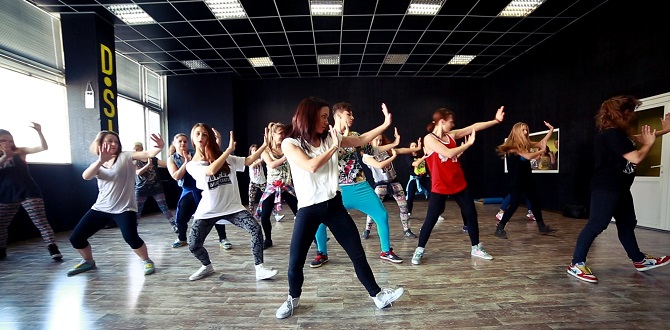 Praxis is defined as having five stages:
Praxis is defined as having five stages:
- Ideation
- Motor planning
- Execution
- Rehearsal
- Performance
Basically what this means is that the more knowledge of dance you have, the stronger you are in the ideation phase. This is the part where you pre-visualize yourself engaged in the movements.
If you struggle to pre-visualize dance moves, try active image streaming. It should give you a boost so you do better during the motor planning and other stages.
With this context in mind, let’s look at some specific tips that will help you remember choreography basics and specific nuances fast.
One: Know The Definition Of DancingAccording to Lyn Paine, author of the Complete Guide to Primary Dance, dance is at least two things:
- Movement
- Expression
Noting these two levels gives you a huge memory cue: Many people are so focused on memorizing the moves, they forget to mentally note the emotions or ideas behind the expressions.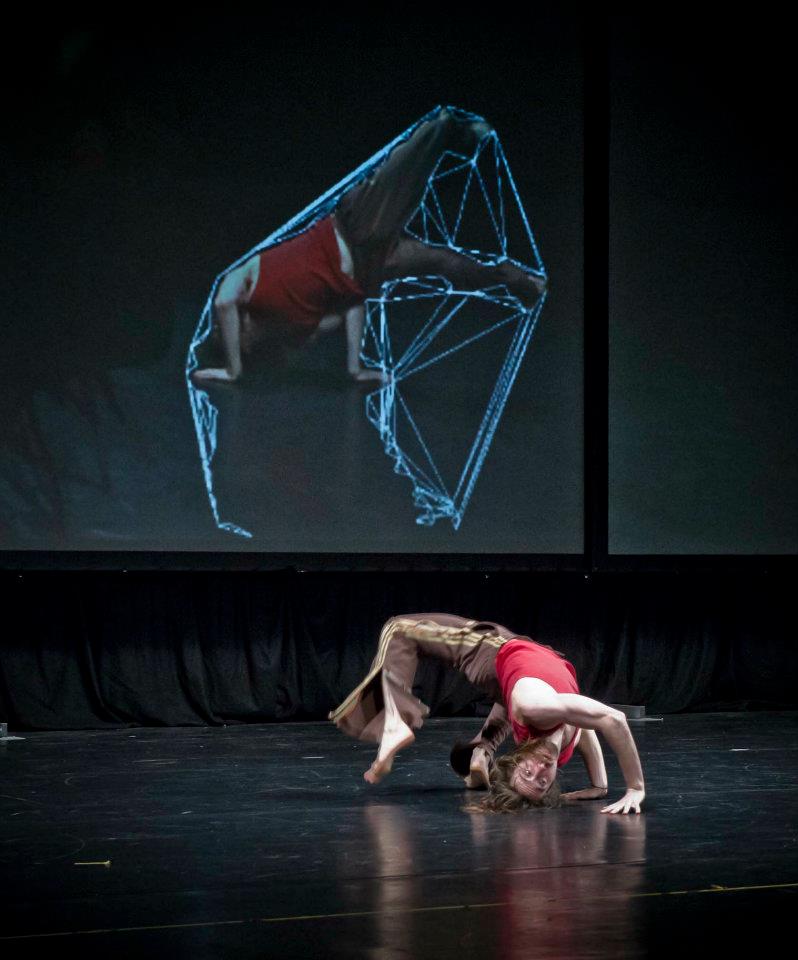
But you can use knowledge of the intent behind the dance to create a mental frame or field that helps you connect the dots.
As mentioned above, knowing the genre can help us well. You can connect new moves you need to memorize with ones you’ve seen in similar or related types of dance. Or you can use contrasts to help you remember movement patterns.
Two: Name The PartsThe basic glossary of dance moves is not so huge that you could not memorize it in a day or two.
How? Use a Memory Palace. It’s an essential tool that can also help you memorize what dance moves look like.
For example, if you’re trying to remember “feather step,” you might place an image of yourself stepping on feathers in a corner of your bedroom.
To remember the term, enchufla, you could imagine the music group Enya eating enchiladas while performing this move on a UFO. Have this imaginary association take place in another corner of the bedroom.
This kind of imaginative association will help you remember both the word and the movement.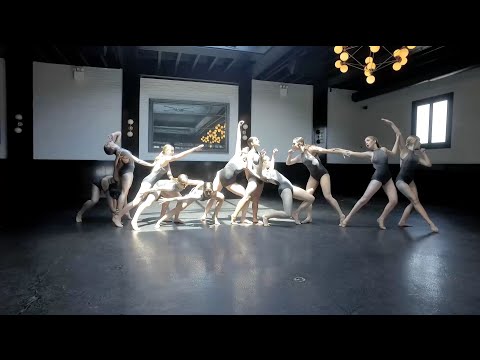 You will also have a location to refer to in your mind so you can “find” the information.
You will also have a location to refer to in your mind so you can “find” the information.
Repeat accessing the image and decoding it back to the target information a small number of times. It will enter long term memory with much greater ease.
Three: Visualize The Moves In A Memory PalaceA Memory Palace is a mental recreation of a building you’re familiar with – such as your dance classroom.
If you were to take that space and imagine it, you could mentally “project” the body positions you need to assume onto the walls – once of which will probably be a mirror.
To perform the projection, you will want to have the specific dance move in mind – and know it by name.
Then, imagine yourself in the room looking at the wall and project how the body position is supposed to look onto the wall. You might want to split the wall into fourths so you can mentally refer to various references points.
In other words, you might use these divisions to help yourself remember where in space your right hand should be relative to the imaginary center line.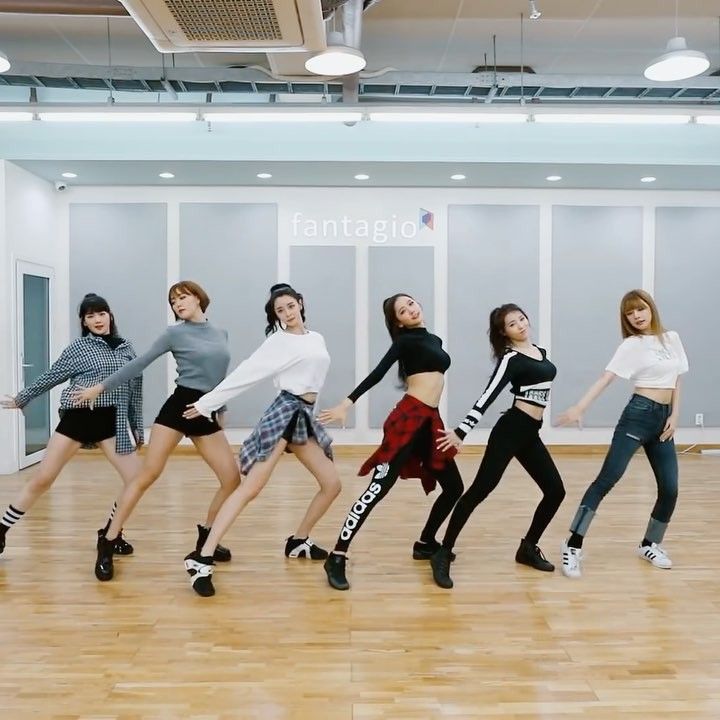
You can divide the wall in a Memory Palace to help you remember hand and foot positions with greater ease. This is similar to how Leonardo DaVinci memorized formulas for dividing space to help him draw the human figure.
If a sequence has four moves, you can place one mental representation on each wall in a room. Extend from there into the next room, hallway or outdoor location from there. Or move to another Memory Palace.
This process will help you with breaking the moves down into smaller parts, which some memory experts call “chunking.”
Three: Use A Number SystemSometimes you have to remember more than what moves to do. You have to remember how many times to repeat them.
In this case, it’s very “handy” to have the Major System on your side.
For example, if you have to repeat a move 5x, you’ll have a mental image that instantly helps you remember this requirement.
You can also number your body.
An example of numbering the body with the Major System to help you remember choreography.
There’s no cookie-cutter way to assign numbers to the body, but you could experiment with:
- Head
- Right hand
- Left hand
- Right shoulder
- Left shoulder
- Chest
- Stomach
- Right hip
- Left hip
- Groin
- Right thigh
- Left thigh
- Right calf
- Left calf
- Right foot
- Left foot
For example, my image for 01 is a tragedy mask. Movements using the head could draw upon this image.
If you have to move your right shoulder, then your left hip, followed by your right foot, the sequence could be 04, 09, 15 and you would string together visual images to help you remember that pattern quickly.
Four: Become More MindFul Of MovementIn Mabel Elsworth Todd’s book The Thinking Body, she lists eight ways to become more conversant with the movements of your body:
- Pilates-Based Conditioning
- Rolfing
- Feldenkrais
- Alexander Technique
- Ideokinesis
- Body-Mind Centering
- Bartenieff Fundamentals
- Laban Movement Analysis
The more familiar you are with your body and how it moves, the more points of reference you’ll have to make connections.
The more you understand rhythm and notation, the more you can make connections to particular moves.
For example, if you know that a move corresponds with a C chord in the music, you can create imagery that helps you remember the move better.
In effect, we’re using the music to create cues that trigger our recall of the required moves.
Knowing the names for various rhythms also builds up your pattern recognition. The more you know about dance, the more you can know about it. Your brain will make more connections on autopilot.
For more on quickly learning chords, check out how to memorize a song.
Six: Record YourselfThese days, it’s easy to set up a camera and record yourself practicing. You get instant feedback, and not just from yourself. You can post your routines to the Internet and get instant critiques from thousands of people.
But the point is to give yourself an external mental picture of your performance.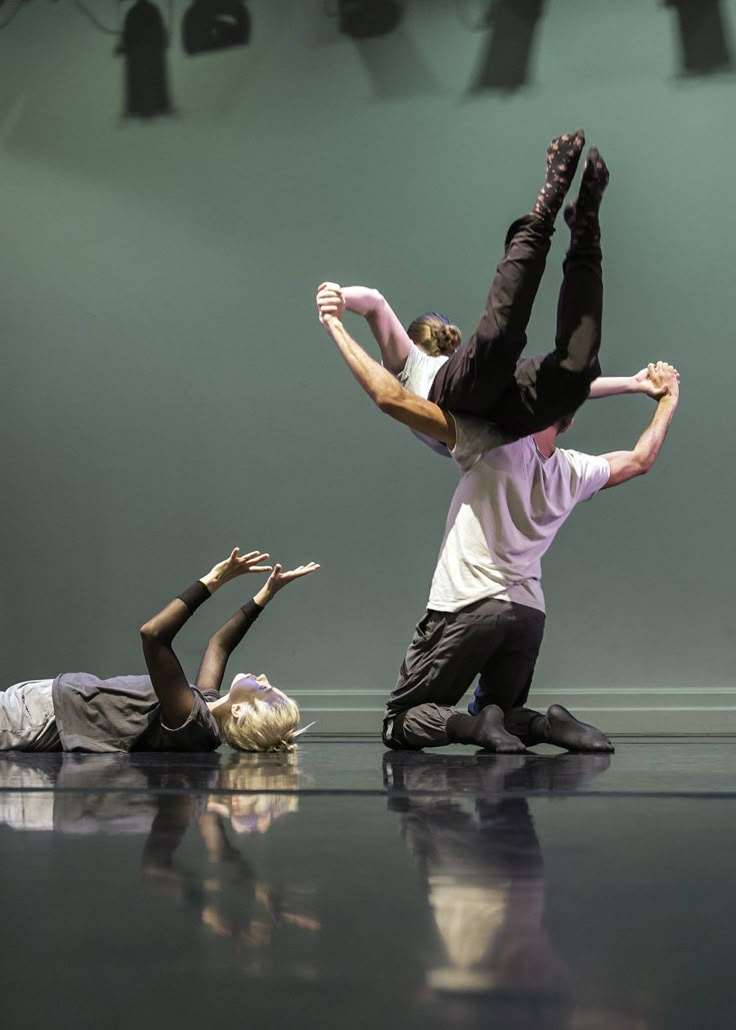 Observation will help you reflect in ways that improve both the ideation, motor planning and execution stages. It will also help you check for the all-important level of expression many dancers miss, making them look robotic instead of natural and dynamic.
Observation will help you reflect in ways that improve both the ideation, motor planning and execution stages. It will also help you check for the all-important level of expression many dancers miss, making them look robotic instead of natural and dynamic.
Too many people practice dance on their own. But when you practice with others, you can turn learning into a game.
Practicing you dance moves with others is a great way to get the kind of feedback that leads to faster learning.
For example, you can start with just one move. All of your friends have to perfectly imitate the move.
Then you add a second move, which they have to imitate. Add a third, fourth and so on. The first person who incorrectly executes the sequence loses the game.
Of course, there are no losers at the end of the day. Everyone wins by turning learning into a game. Always be sure to highlight that point when learning with others.
And don’t run from the challenge. Mistakes are a huge part of how we learn and that’s what makes games like these so powerful for ideation and correcting our approach to the other stages of learning choreography.
Mistakes are a huge part of how we learn and that’s what makes games like these so powerful for ideation and correcting our approach to the other stages of learning choreography.
The science on how to learn faster is clear. You need to pre-visualize what you want to learn, follow through by getting your body involved, and then observe the process.
Since many dance routines are complex, it only makes sense to give your mind
the most powerful visualization tool that exists. If you want to remember dance steps using a Memory Palace, check out this full free course for more on how to use this incredible tool:
As you continue to have fun, keep these final pointers in mind:
- It’s okay to have high expectations, but keep things realistic. Know your goals with learning dance and base them on reality so you can be sure to succeed.
- Make sure you choose the right clothes.
 Memory techniques can help, but they can’t promote flexibility and proper circulation.
Memory techniques can help, but they can’t promote flexibility and proper circulation. - Manage your space and stick to a schedule. You will remember more faster by keeping a regular practice. An established routine is much easier to maintain when you assign a specific location special status for your dance practice.
- Let go of the outcome. Learning anything is a marathon, not a race.
If you’re interested in more, there’s an Australian memory champion who also dances professionally. Check out my interview with Anastasia Woolmer for more details. She actually reversed the process we discussed today by using movement to help her memorize numbers – the flexibility of these techniques is amazing!
So what do you say? Are you ready to explore some new ways of memorizing movement you might not have tried before?
90,000 I want to go to dances, but the problem is very poorly remembered for the movement of I want to go to dances, . ..
..
ago
1
...
...
2
Aheads
43 answers
Last - Go to
#2
#3
#4
#5
#6 #6 #6 #6
#7
#8
#9,0003
Witch
22222 To work out the dance you have to practice for a very, very long time. don’t worry, I don’t have an ear for music at all, it’s hard for me to get in time, the rhythm of the music. But I'm an excellent dancer and often performed at various competitions before.
don’t worry, I don’t have an ear for music at all, it’s hard for me to get in time, the rhythm of the music. But I'm an excellent dancer and often performed at various competitions before.
#10
once at the screening a year ago, I just disgraced myself for myself: we were shown 3 eights, I was the only one out of 20 people who could not reproduce. I was accepted into a beginner group. I have been dancing for 2.5 years, 3 times a week, and only now I began to feel some progress. I began to remember faster. Moreover, many movements are often similar to each other, so it becomes easier, you can predict the next movement, as well as combine it yourself and get new eights.
And in a dance group of 10-20 people, there will definitely be people who have similar problems - so don't worry.
Also, our trainer very often gives us coordination exercises, which also help to develop muscle memory.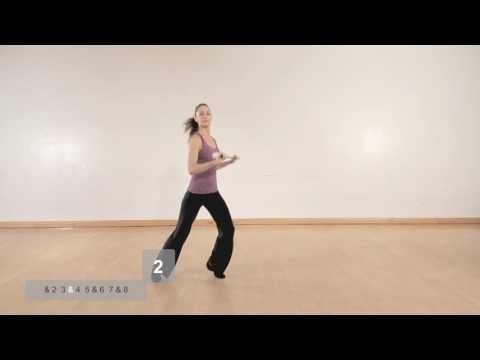 Well, the simplest thing: with the left hand we draw a triangle in the air, and with the right hand at the same time a square, or the hands make some movements, and the legs others.
Well, the simplest thing: with the left hand we draw a triangle in the air, and with the right hand at the same time a square, or the hands make some movements, and the legs others.
if you really have a desire to learn to dance - sign up - you won't regret it.
#11
#12
#13
#14
no it's not too late. Since groups are formed taking into account age and level of training.
#16
#17
I have 3 dance directions .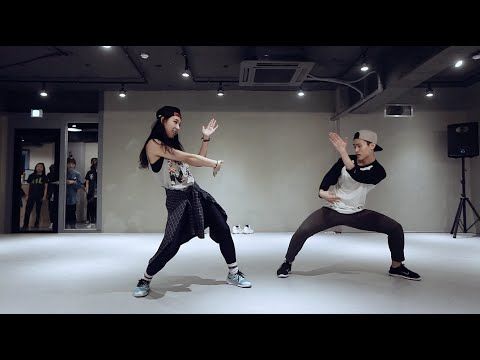 . Ballet, East and Hip-Hop ..
. Ballet, East and Hip-Hop ..
and think about the movements I can’t remember at all (
well, in ballet and in the east, more or less, but Hip-Hop .. in general, tin. .it's all very fast..so I can't remember anything..
#18
I didn't do much dancing...and that's why my muscle memory is not very developed. ..
I work as a pj...with improvisation in the dance like normal...but I remember the last dances, and when I remember...it still takes time to do it all correctly and beautifully...other girls from work easily remember ... but I'm not (((Am I really that stupid ((???
#19
Although it is possible that you do not dance much.
#20
I train my memory - I learn links from videos) it seems to be a little better with my memory)
I really like to dance, but because I remember slowly complexes are added(
#22
Guest
Late 30? Average age probably 18-21?
it's not too late, trust me. Nothing, it's never too late)))) I'm 45, I'm into club dancing (GO-GO), I even managed to perform. But I really remember the movements very slowly, I have to take additional classes so as not to let the speakers down. Came here to fix my problem. Everyone remembers the movements quickly and is already working them out, but when I return home I can’t remember anything myself))) And the performances, it seems, will now be constant.
Nothing, it's never too late)))) I'm 45, I'm into club dancing (GO-GO), I even managed to perform. But I really remember the movements very slowly, I have to take additional classes so as not to let the speakers down. Came here to fix my problem. Everyone remembers the movements quickly and is already working them out, but when I return home I can’t remember anything myself))) And the performances, it seems, will now be constant.
#23
#24
#25
Experts Woman.ru
-
Maxim Sorokin
Practicing psychologist
620 answers
-
Nikita Nosov
Practicing psychologist
8 answers
-
Maria Burlakova
Psychologist
3 answers
-
Nikitina Anna Viktorovna
Specialist of Oriental practitioners
29 answers
-
Vyacheslav is rich
Certified practitioner.
 ..
.. 254 answers
-
Daria Gorbunova
Practicing psychologist
142 answers
-
Novikova Olga Dmitrievna
Practicing psychologist for ...
13 answers
-
Egor Mazurok
Clinical psychologist
11 answers
-
Alla Buraya
Psychologist
34 answers
-
Nidelko Lyubov Petrovna
Practicing psychologist
226 answers
#28
#29
9000 #30
#31
True Stories
-
I am infuriated by my husband with his children and grandchildren .
 ..
.. 316 answers
-
The man immediately warned that all the property was recorded for children
473 Answer
- 9000
Such a salary - I do not want to work
309 answers
-
A lie 22 years long. How to destroy?
654 answers
-
Husband left, 2 months of depression... How will you cope if you are left all alone?
153 answer
#32
#33
#36
Tape
I studied at home on my own from disks, I realized that it was difficult for me to remember the movements, I had to revise 10 times, repeat five times.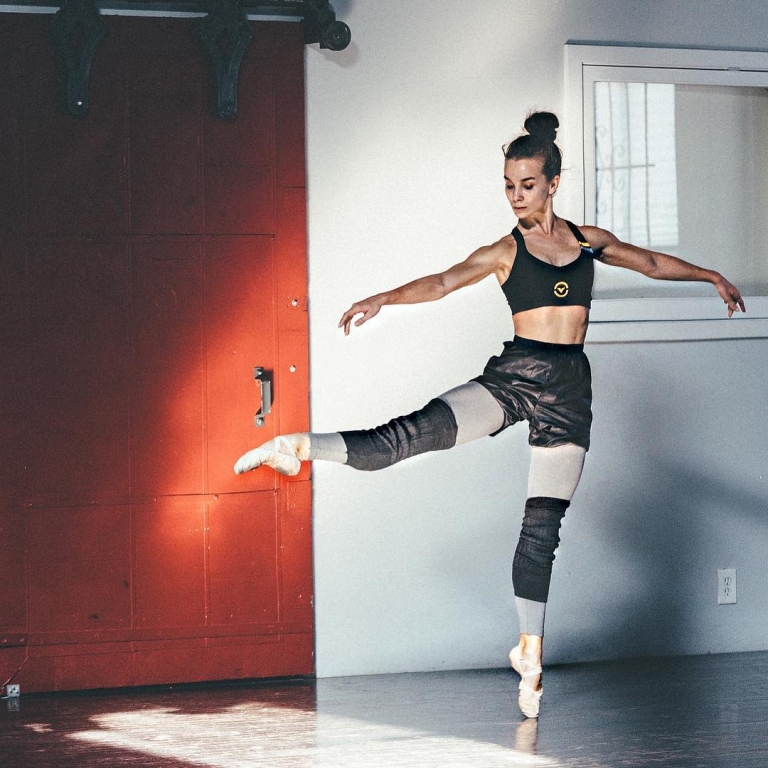 And if you go to a group, no one will repeat that. What to do? How to develop muscle memory?
And if you go to a group, no one will repeat that. What to do? How to develop muscle memory?
#37 9000 2017, 20:54
#41
#42
#43
Tape
studied at home, both at home on her own. on disks, I realized that it is difficult for me to remember the movements, I need to review it 10 times, repeat five times. And if you go to a group, no one will repeat that. What to do? How to develop muscle memory?
New themes
-
Terrible sex!
No answers
-
talked like one young person
No answers
-
I swim with fat
2 Answer
- 9000 907 ZhMzh for the muzhik .
 ..
.. 1 answer
-
A man pretends to have a new girlfriend, but she is not there +
No answers
#45
#46
I know pain ...
Girls, the same problem! Recently went to fitness dancing! But just some kind of tin! I can’t remember, sort of like, elementary ligaments, if you look from the side !!! True, I have been - a couple of times, so far. But in my opinion it doesn't matter. Clear coordination and memorization - either there from the very beginning, or not, and appears through exhausting training of the body and memory. Stupidity has nothing to do with it. Although, I will not hide, the teacher herself is sometimes in shock) She wants the whole group to dance - as one! Only, some - months of movement repeat, and some - brand new ones come. It is clear that everyone has "their own level" and, in mastering the "new" is the same. People are all different! More from school! Some solve the problem in a minute, but with errors. Others - in 10 minutes, but correctly. Some only draw, while others only sing. And try to put the artist behind the keys! Simply, with age, the level of claims increases, both to oneself and to the environment. And, of course, it's not a secret for anyone that many are understanding, while others simply BRIGHT AGAINST THOSE WHO MAKE MISTAKES! It certainly plays into their hands (psychologically). In general, my opinion. It is necessary to go to the dance studio AT ANY AGE (if you want to learn how to dance). Since, in FITNESS CENTERS, there are no groups - by levels. All in one pile! And those who have been dancing for a year, and those who came yesterday (catch up!). If we take into account the fact that there are STILL PROBLEMS WITH QUICK MEMORY AND WORKING out of movements, then this generally seems like an impossible mission.
It is clear that everyone has "their own level" and, in mastering the "new" is the same. People are all different! More from school! Some solve the problem in a minute, but with errors. Others - in 10 minutes, but correctly. Some only draw, while others only sing. And try to put the artist behind the keys! Simply, with age, the level of claims increases, both to oneself and to the environment. And, of course, it's not a secret for anyone that many are understanding, while others simply BRIGHT AGAINST THOSE WHO MAKE MISTAKES! It certainly plays into their hands (psychologically). In general, my opinion. It is necessary to go to the dance studio AT ANY AGE (if you want to learn how to dance). Since, in FITNESS CENTERS, there are no groups - by levels. All in one pile! And those who have been dancing for a year, and those who came yesterday (catch up!). If we take into account the fact that there are STILL PROBLEMS WITH QUICK MEMORY AND WORKING out of movements, then this generally seems like an impossible mission.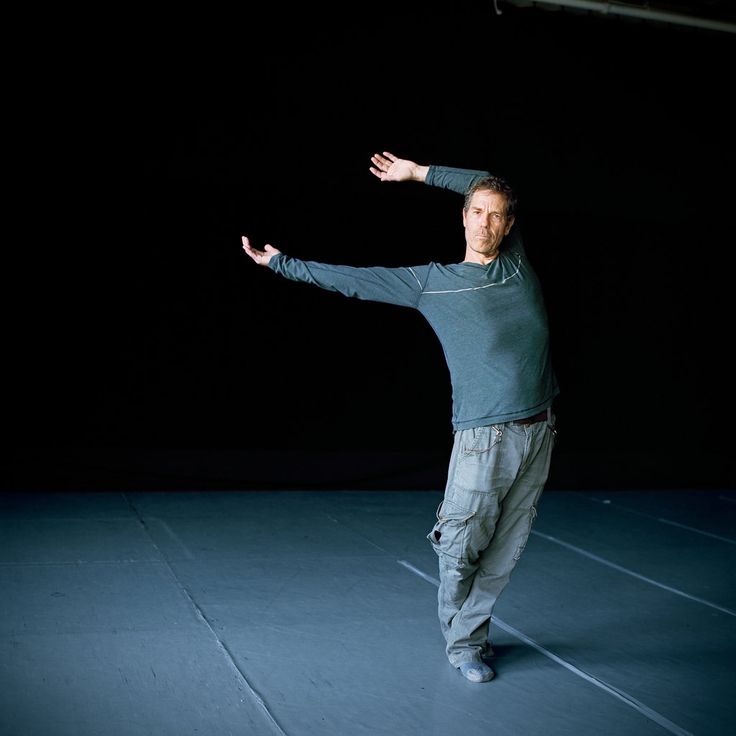 They also look askance at me) And I feel like a BLONDE myself (may they forgive me). But I really love to dance.... This is my dream since childhood! Therefore, POFI!!!!! AS WE CAN .... SO WE DANCE!!!!!! HEAD UP AND ALL TO THE GARDEN! Everyone and everything .... in this life - its time! Good luck everyone! :)
They also look askance at me) And I feel like a BLONDE myself (may they forgive me). But I really love to dance.... This is my dream since childhood! Therefore, POFI!!!!! AS WE CAN .... SO WE DANCE!!!!!! HEAD UP AND ALL TO THE GARDEN! Everyone and everything .... in this life - its time! Good luck everyone! :)
#47
#40
Late?
Guest
Average age probably 18-21?
#49
Guest
Is 30 late? Average age probably 18-21?
Attention
#50
Guest
Well, that's how everything looks like! But is there probably some kind of technique for people like us ?;
Back
1
. ..
..
...
2
Next
Next Topic Myths and reality. Let's share our experience.
482 Answer
Previous Topic
-
LUCK IN MIRIMANOVA
343 Answer
dances
Author: Pavel Sobiray
psychologist, teacher of salsa and tango
dances
Author: Pavel Sobiray
psychologist, teacher of salsa and tango
This is the most common story of those who believe that the mere act of attending a pair dance class is enough to learn how to dance.
Absolutely not. If you want to really dance well, you have to make an effort outside of the dance class.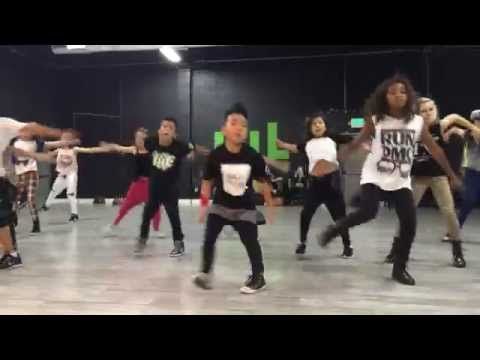 A good teacher will definitely be needed, but the initiative should be on your side.
A good teacher will definitely be needed, but the initiative should be on your side.
1. Listen to music
The most common and accessible advice that is given already in the first lessons. And it definitely works. Music creates a certain atmosphere of the dance and intuitively you want to move to it. It doesn't matter where you listen to music - in the car, on headphones while walking or doing household chores.
An addition that will help you dance better is your active participation in the music. Sing along, dance or simply beat musical accents with any free parts of the body. In the subway, for example, it is enough to tap out bright moments with your fingers, in the car to sing along with sounds, and at home you can jump for pleasure.
2. Watch videos of good dancers
It's complicated, but also obvious. It’s more difficult, because without recommendations from more experienced dancers, unfortunately, it’s not so easy to find a good quality video on the net (I mean not the resolution quality, but the content itself).
Meaningful video viewing is about building an understanding of HOW dancers make a particular impression on a partner or viewer. Technology is at the heart of everything. Understanding how the pros do it is a big step forward.
It is important to distinguish a show from a disco dance, a staged performance from an improvisation, a stylized dance from an authentic one, etc. Ask for recommendations and dance teachers will always throw off a couple of videos of worthy landmarks.
Tango Z. Showreel.
Online modern tango courses
Tango nuevo is the most advanced version of tango. We can quickly learn to dance from zero to a steep level.
| View details |
3. Dance in salsatecas/milongas/discotheques
A very delicate moment when it is worth coming to the first party. From a technical point of view, most students in 1-3 months have a sufficient set of figures and techniques to come and dance calmly. Psychologically, the same moment can be stretched out for an indefinite time. After all, it is imperative to “not lose face”, “learn more figures” and be sure what to do in case “there is an unfamiliar movement”.
In fact, the partygoers don't really care (except for a small layer of non-professional teachers who want to help inexperienced dancers by treating them as customers in the future). It is important to come and try dancing after a month of classes. You can only with friends or guys from your group. This will be enough to feel the adrenaline and inspiration from the dance.
4. Dance with partners or partners not of your level
The conventional wisdom that you need to practice in groups of your level does not stand up to the test of experience. Perhaps now your eyes widened in surprise, and you want to meaningfully read the phrase again. Yes, you saw everything correctly: when you dance with a partner of your level, you don’t grow anywhere.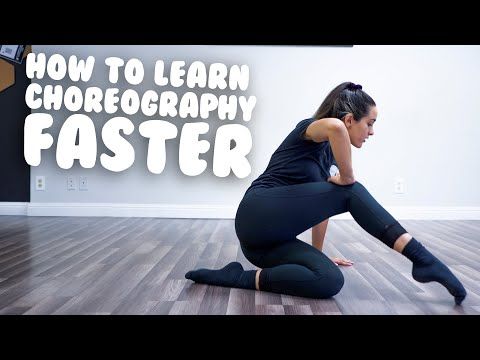
It's important to understand that not only does it work one way and you have to dance with cooler dancers, but it works even more effectively the other way. It is no coincidence that teaching pair dances dramatically raises the level of the teacher himself. You have an endless stream of very beginner dancers.
How it works. A more experienced partner needs to be "stretched". It's easy and obvious. With beginners, you need to take more initiative on yourself, see the general pattern of the dance more widely, turn on and insure more, try to be an example and be more careful. The quality of interaction begins to grow significantly. And wonderful partners too.
Dancing with partners of your level doesn't make you grow. Dance with beginners and more advanced dancers
Dominican Bachata Women's Style Online Course
Want to learn how to hypnotize those around you with the most appetizing part of your body? On the course we will tell you all the secrets.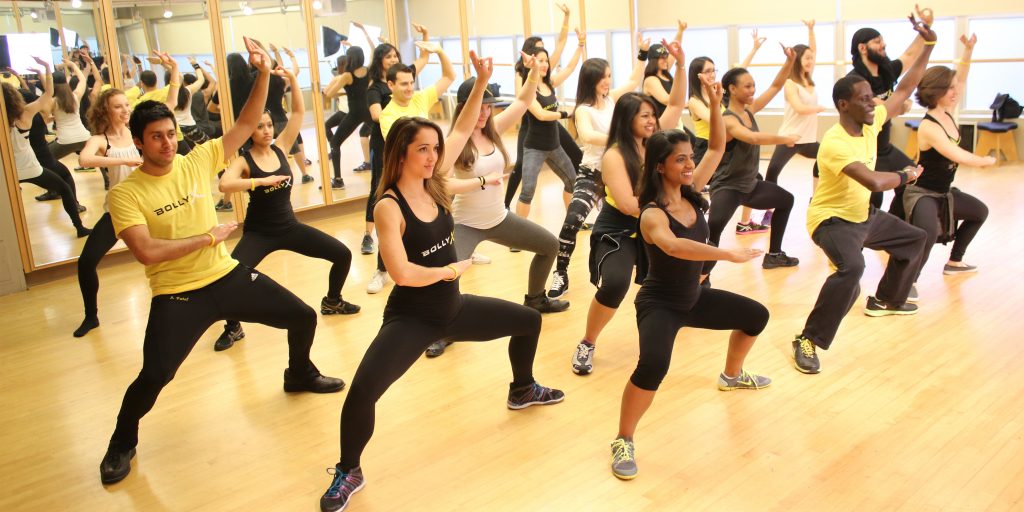
| Interesting |
5. Learn to dance for a partner and for a partner
Turks and Argentines are one of the best partners in the world. In Russia, partners are highly valued. Why? The answer is simple. In Argentina and Turkey, it is not questionable for men to ask another man to lead in one piece or another and give feedback on the quality of the lead. For them, it will be a great shame to hear moralizing from a partner, or even more so to be known in the community as an insecure partner.
In Russia, due to the constant, often far-fetched, opinion that there are more women in pair dances, partners calmly get up and study their partner's part. Such partners then grow into very cool dancers and teachers. In no case do this at parties, only in class. Here we are talking only about the learning strategy. At parties, be yourself.
6. Do not memorize the links
Always try to look deeper and understand the through principle and idea of movement. Understanding what and how is done will make it possible to independently generate any sequences and chips.
Understanding what and how is done will make it possible to independently generate any sequences and chips.
Human memory is limited and there will always be a moment when something will escape and your repertoire will be limited by the size of RAM.
In Argentine tango, for example, there are seven levels of movement construction that, when mastered, will allow you to make millions of combinations. And how many dance sequences can you really remember? In rueda, more than 150 figures dance in a rare circle. It's hard to keep more in mind.
7. Develop your body
Many years of experience in teaching couple dance shows that as soon as everyone pairs up in a class, any progress in individual style ends. But it is the individual style that distinguishes everyone at the disco: partners change, and style is always with you.
The body as the main instrument of dance must be very plastic, responsive and emotional. Surprisingly, not all pair dance schools have a general physical warm-up. It is vital to tune the body and understand how it works.
It is vital to tune the body and understand how it works.
You can always train extra and concentrate more on the basic steps, as their true value is as body work. The sequence of steps is, in fact, the simplest thing that can be in pair dancing. The quality of individual performance determines the craftsmanship.
8. Try on the images of inspiring dancers
A psychological life hack for those who have already mastered the steps, but still feel that there is not enough brightness and drive. Most are terribly afraid of being someone else's "clone". Here the action is the same as under the influence of hypnosis - the more you resist, the more you plunge into an altered state of consciousness.
With a high degree of probability, you are already dancing like someone else's "clone". A meaningful fitting of someone else's image is that you mentally take the image of the one who inspires you (inspiration is critical in this case) and "put on" yourself. Then you start dancing and trying to feel in general how it is to be able, for example, to be the best partner or the sexiest partner in a disco. This is much more difficult than it seems. But it works extremely efficiently.
Then you start dancing and trying to feel in general how it is to be able, for example, to be the best partner or the sexiest partner in a disco. This is much more difficult than it seems. But it works extremely efficiently.
9. Dance to unformatted music
Habitual rhythms keep you rigid. Tango salon or speedy timba leave little room for experimentation and fantasy. Pattern dancing is always noticeable and is reserved for beginners.
The truly new is born outside of the usual. Look for places to experiment. If there is no place, organize self-training. The main thing is not to get carried away, because music determines the style. We bring something new to pair dances, rather than trying to change them.
Search, improvise, do not be afraid to go beyond, develop in different directions, be inspired by music atypical for the style
10. Try your hand at basic dance directions
dances exist according to their own non-choreographic laws.
This is the deepest delusion, which has turned into a ceiling for the qualitative development of partner dances. After all, all professional dancers, for example, in salsa or bachata, build their ideas on the basic choreographic principles.
Do not think that choreography is only applicable on stage. Any meaningful movement of the body can be choreographic. In general, try classical or modern choreography. Basically, hip-hop can work too.
11. Look for battle sensations
Pair dances return us to an active position of manifestation of our body. As in the days of our ancient ancestors, we impress the members of the opposite sex by how dexterous, hardy, sexy, etc. we are. Modern laws of the jungle in the entourage of large cities.
If you look around the dance floor, it becomes clear that the majority are clearly herbivores (not in the sense of vegetarians, but in relation to those around them).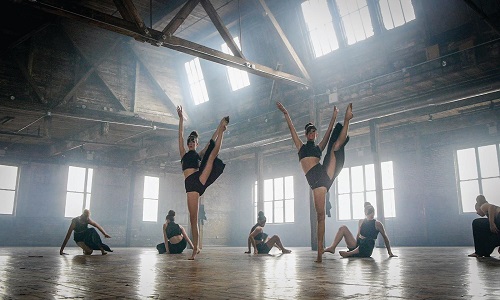 I am sure that predators are always more interesting in terms of the attractiveness of the image - try to find a counterbalance among herbivores, for example, a cat woman or a lion man.
I am sure that predators are always more interesting in terms of the attractiveness of the image - try to find a counterbalance among herbivores, for example, a cat woman or a lion man.
The conversation is about an internal position, not about aggressiveness. Lability and lack of control are inherent in adolescents, and not in adult self-sufficient people.
Accordingly, even a training or friendly battle gives, on the one hand, practical skills - to make a bright sequence of movements, bring an idea to a climax, show a spectacular feature, on the other hand, develops the psychological basis of the dance - self-confidence, resistance to extraneous attention, self-control and self-control in complex elements.
12. Communicate with professionals
The environment shapes the internal position. Basically, real passionaries of the dance community are ready to openly talk, discuss and support the development of dance in every possible way.




